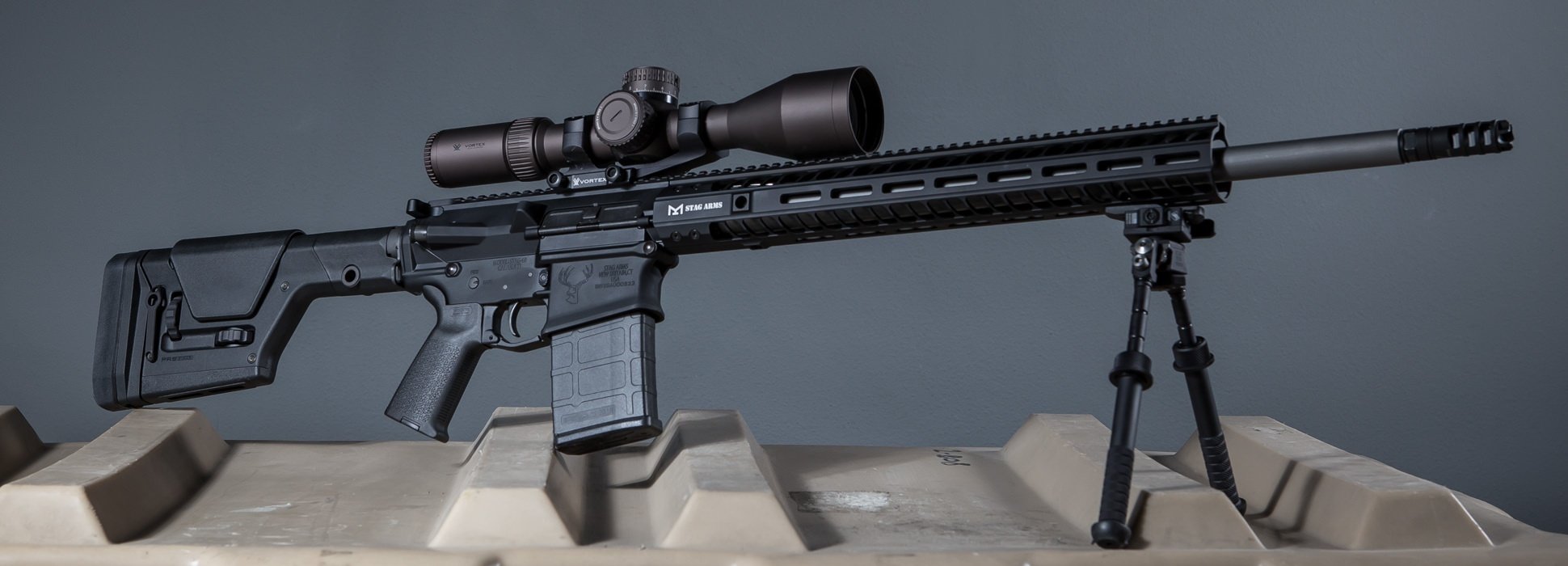 Choosing a rifle scope is at least as important a decision as choosing a rifle. It is not unrealistic to pay as much or more for the scope as the cost of the rifle. So it is no surprise that you want to get all the possible features for your money.
Choosing a rifle scope is at least as important a decision as choosing a rifle. It is not unrealistic to pay as much or more for the scope as the cost of the rifle. So it is no surprise that you want to get all the possible features for your money.
But when it comes to optics, you can get too much of a good thing. Adjustments that are too fine, reticles that are too complex, and the most common mistake: too much magnification.
Always fit your optic to the purpose for the rifle. The requirements that a competitive long-range shooter has for his scope are completely different that the requirements for a military sniper's scope, or a hunter's scope, and all are likely different than what is best suited for home defense. Snipers and skilled long-range competitors will likely know what they need, so we will concentrate on hunting and defense, or a combination.
In both uses, and optic with a magnification range that is too great is often more detrimental than a magnification range that is too low. Here is why:
1. Most shots are close-range shots. While the possibility exists that a hunter may be presented with long range shots, close-range shots are more common. The hunter may surprise the game or the game may surprise the hunter, but it is very common for shots to be under 100 meters. In the east, where hunters shoot from tree stands, this is especially common.
A scope with a 6X maximum magnification in the hands of an experienced shooter provides enough magnification for most reasonable hunting shots. 10x maximum magnification is often ideal for a hunting scope, and should be considered the maximum for most general hunting.At very close ranges a high-magnification scope makes shooting slower, or even impossible, as the hunter may see only part of the animal filling his scope, unable to determine what part of the animal he is aiming at. Remember that the speed at which a target needs to be engaged is normally determined by the range to the target. A close target needs to be engaged more quickly.
A 16x scope may be ideal for a competitive shooter, but could cause a hunter to miss a close target.
The classic variable-power hunting scope is a 3 to 9 power scope, for good reason. Today, there are a lot of excellent scopes that extend the magnification range, to 2.5 to 10 power, for example. When hunting, keep the scope set on the lowest magnification setting and then dial the magnification up when needed for more distant targets.
In self-defense, long shots are even more rare. A rifle intended for self-defense is normally best outfitted with red dot sight. If the rifle will be a dual-purpose rifle, used in both hunting and self-defense roles, a low-power variable scope may be ideal. Something in a 1-4x range, or 1.5-8x, or similar. Another option is a red dot sight and a removable magnifier.
2. More magnification costs more money. As magnification is increased, or magnification ranges increase in a scope, good precision, clarity, and light transmission become more expensive to achieve. It is easy to pay several hundred dollars more for magnification that is unnecessary.
3. Higher magnification scopes add bulk. As a rule, the higher the magnification range, the bulkier and heavier the scope is. Why add unnecessary weight and size to your rifle?
When choosing a scope for your rifle, don't be drawn in by flashy advertising. Think about the features being offered. Do you need them? Are they an advantage or a detriment?
Consider the purpose for the rifle. Determine the lowest magnification that will cover what the rifle will be used for, and look for a scope that has a similar magnification.




